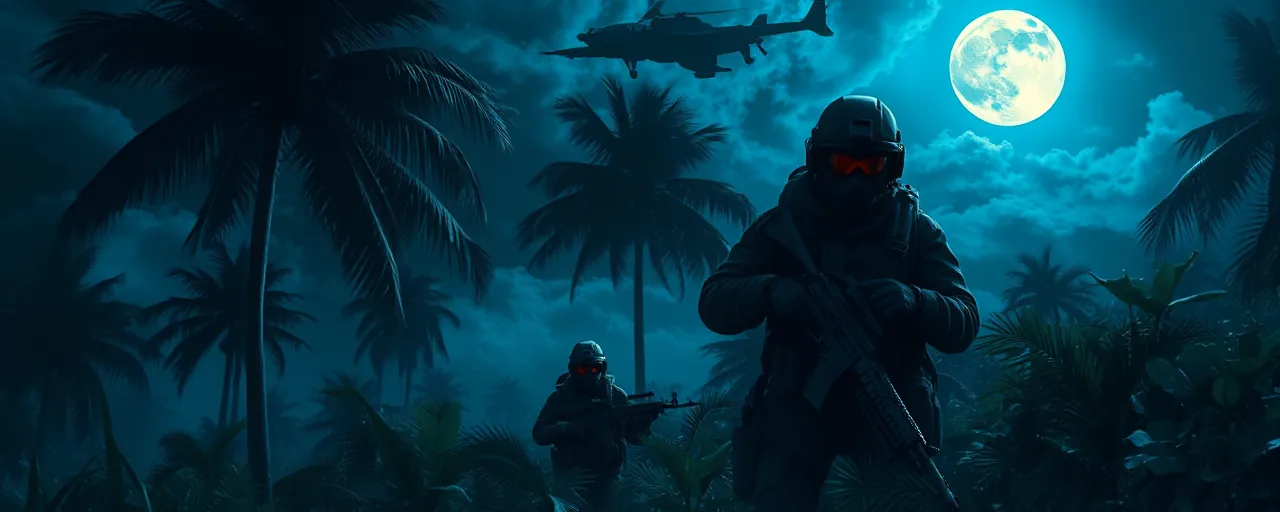A Partnership That Packs a Punch
When U.S. and Panamanian special operations forces sat down for their first official talks on February 18, 2025, it wasn’t just a meeting. It was a thunderclap of resolve, echoing decades of ironclad cooperation. These weren’t bureaucrats shuffling papers; they were warriors forging a shield for the Western Hemisphere. The Department of Defense spotlighted this milestone, and for good reason: it’s a blazing testament to America’s commitment to strength, stability, and stomping out chaos wherever it festers.
Look at the stakes. Panama isn’t some backwater; it’s the linchpin of global trade, home to the Panama Canal, a artery that keeps the world’s economy pumping. U.S. Special Operations Command South (Socsouth) has been embedded there since 2020, working hand-in-glove with Panama’s finest. Navy Rear Adm. Mark A. Schafer nailed it when he said this partnership is ‘crucial for regional stability.’ He’s not wrong. This is about more than photo ops; it’s about keeping the bad guys at bay and the good guys ready.
Building Muscle Where It Matters
The evidence is rock-solid. Joint Combined Exchange Training exercises aren’t just drills; they’re the forge where elite forces sharpen their edge. In Panama, these sessions have turned quick reaction teams into a well-oiled machine, mastering marksmanship, small-unit tactics, and demolition. Army Maj. Trevor Wild pointed out Socsouth’s role since the early 1990s, training Panama’s National Border Service to choke out narcotraffickers. Since 2008, they’ve been at it, and the results speak loud: drug busts are up, and Panama’s security forces are tougher than ever.
Take Fuerzas Comando 2024, hosted by Panama last May. Nearly 450 personnel from across the region converged for a no-nonsense skills showdown. That’s not a carnival; it’s a crucible. Exercises like Panamax-Alpha, running over a decade, lock in canal security and keep our allies interoperable. This isn’t theory; it’s boots-on-the-ground proof that U.S. special forces don’t just fight wars, they prevent them by building partners who can hold their own.
Why This Matters Now
Let’s cut through the noise. The world’s a mess, and Central America’s no exception. Transnational crime, narcotrafficking, and illegal migration aren’t slowing down; they’re evolving. Meanwhile, China’s creeping into Latin America with its Belt and Road cash, eyeing influence right in our backyard. The U.S.-Panama alliance isn’t a luxury; it’s a necessity. Securing the canal and countering Beijing’s moves demand a forward presence, and Socsouth delivers it. Nearly 6,000 U.S. SOF personnel are deployed across 80 countries, and Panama’s a shining example of why that matters.
Some naysayers argue we’re overstretched, that SOF’s budget hasn’t budged since 2019 while demands skyrocket. Fair point, but here’s the counterpunch: these partnerships are low-cost, high-return. A few million in training beats billions in crisis response any day. The memorandum of agreement signed during the talks locks in long-term collaboration, proving we’re not dabbling; we’re doubling down. Panama’s hosting of regional exercises shows they’re all in, too.
The Bigger Picture: Strength Through Unity
History backs this up. Since USSOCOM stood up in 1987, SOF’s forward deployment model has been a game-changer. From Colombia’s takedown of FARC to El Salvador’s gang crackdowns, these guys don’t just train; they transform. In Panama, it’s the same story. Joint Operation Patria smashed trafficking rings, and U.S.-provided choppers gave Panama’s forces wings. This isn’t charity; it’s strategy. A strong Panama means a stable region, and that keeps America safer.
Contrast that with the hand-wringing from folks who’d rather slash defense spending and retreat. They claim we’re meddling, that Panama can handle itself. Reality check: without U.S. grit, those counter-narcotics wins—like the 40% interdiction spike in 2015—don’t happen. Transnational threats don’t respect borders or budgets; they thrive on weakness. Pulling back now would hand the reins to cartels and foreign rivals. That’s not an option.
Sealing the Deal
The February talks weren’t a one-off; they’re the launchpad. Schafer’s call for ‘open dialogue and curiosity’ isn’t fluffy rhetoric; it’s a battle plan for innovation. The joint training—think advanced combat tactics and medical skills—pairs perfectly with strategic jawboning, setting a gold standard for military partnerships. This is America at its best: leading, equipping, and standing firm with allies who share our spine.
So here’s the bottom line. The U.S.-Panama security bond isn’t just holding; it’s thriving. It’s a lifeline against chaos, a bulwark for trade, and a slap in the face to anyone who thinks America’s stepping back. With SOF leading the charge, we’re proving that strength through unity isn’t a slogan; it’s a fact. Panama’s in, we’re in, and the world’s better for it.
